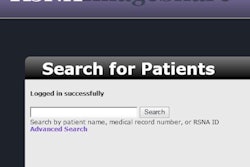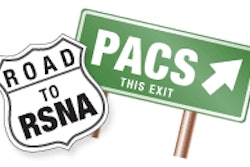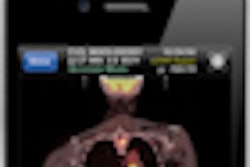CHICAGO - The Mayo Clinic in Rochester, MN, has experienced a disconcerting increase over the past four years in the number of outside image CDs that fail to conform to the DICOM standard, according to a study presented on Monday at the RSNA 2011 meeting.
In a four-year review of outside patient image CDs imported by the Mayo Clinic, a research team found a statistically significant drop in hard-copy films being imported and a significant increase in DICOM-compliant CDs. However, the number of non-DICOM-compliant CDs almost doubled.
"This is an unsettling trend to us in terms of what's going on in healthcare reimbursement, larger affiliated care networks, as well as just in general trying to focus on a more efficient and less redundant use of imaging and a more efficient practice," said Dr. Christopher Hunt. He presented the study's findings during a scientific session.
For 25 years, the Mayo Clinic has been interpreting and archiving outside radiology exams. This secondary interpretation has been shown to significantly affect patient care, with an alternative diagnosis in 7.6% of cases.
As outside institutions transition from hard-copy to the digital domain, it's important to be able to handle outside films in multiple formats, according to Hunt.
"Especially at larger institutions like ours, this can be a strain not only on personnel but on space requirements, and it can reduce productivity," he said.
Better understanding of these trends can allow for resource optimization, efficiency improvements, and the ability to provide a higher-quality practice, he said. With that goal in mind, the research team set out to describe the trends involving secondary interpretations at the facility, including the total volume of submitted cases and the format for these submitted cases.
In a study that ran from November 1, 2006, to December 31, 2010, the researchers assigned each individual case in their neuroradiology practice to one of three categories: hard-copy film, DICOM CD, or non-DICOM CD.
There were 52,169 cases submitted for formal secondary interpretation at the request of the internal clinicians during the study period, for an average of 1,043 ±131 cases per month. The Mayo Clinic did not experience a significant change in volume over the period.
|
||||||||||||
| All three changes were statistically significant. |
The reduction in hard-copy films was not a surprise and was mirrored by an increase in cases provided in an electronic format, most of which were DICOM-compliant.
"This was largely fueled by easy accessibility to the DICOM format but also other initiatives like the Integrating the Healthcare Enterprise initiative, which really tries to facilitate standard communications between local and remote workstations," he said.
On the downside, the significant and increasing number of non-DICOM-formatted cases is likely being driven by cheaper non-DICOM programs designed to allow office viewing in more of a private-practice setting, Hunt said.
"These are certainly more time-consuming for us to view and interpret and, in addition, these are difficult or sometimes impossible for us to archive for long-term storage for comparison later on," he said.
The study's findings have led to a change in practice at the Mayo Clinic, including a marked reduction in the number of hard-copy film viewers, Hunt said. The institution has also increased the number of DICOM-compatible workstations and maintained the ability to view non-DICOM CDs at these workstations.
Hunt encouraged other practices to perform a similar analysis of their outside films to get a better sense of their individual trends and to help raise a battle cry to contain non-DICOM-formatted image sharing.



















